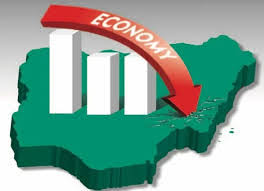The World Food Programme (WFP) has stated that it requires $155.4 million between May and October 2022 to render emergency food assistance to people in the North East.
The March 2022 Cadre Harmonisé project estimates that 4.14 million people in northeast Nigeria will require lifesaving emergency food assistance.
According to a report on its website, the late arrival of donor funds forced a reduction in the number of people reached by the UN agency in February, despite persistent needs in northeast Nigeria.
It stated that abductions and other crimes have increased in frequency in the northwest, saying attacks on farming and herding communities also continued across Nigeria’s middle belt.
The report further stated that storage facilities operated by non-governmental partners in five locations across Borno State received 474.64 mt of humanitarian cargo for 20 organizations. The Logistics Sector consolidated 8.84 mt of air cargo for airlift by UNHAS and supported storage, cargo movement, coordination and information management for 36 organizations.
It adds that a humanitarian situation monitoring report produced by sector partners under leadership of the Ministry of Agriculture and Natural Resources found high
food consumption deficits and limited diet diversity in surveyed areas inaccessible to humanitarian actors.
“Over half of households (55%) struggled to achieve sufficient food intake and more than 77% experienced crisis or higher levels of food deprivation and hunger. During the first two weeks of April the Humanitarian Situation Monitoring Task Force coordinated training of enumerators in Borno, Adamawa and Yobe States. The training included familiarization with the Task Force’s updated monitoring tool,” it revealed.
Under its WFP’s Essential Needs Assessment (ENA), the April 2022 ENA covering October 2021 to February 2022 reports that food consumption has worsened sharply in the northeast.
It revealed further that the proportion of people with poor and borderline food consumption increased 14.5% compared to October 2020.
The report finds many households have fallen from acceptable to borderline food consumption, most notably in Adamawa State.
The ENA survey also notes that an increasing number of households do not have the economic capacity to fund essential needs. The report finds 81.3% of households have food expenditures below the minimum expenditures below the survival minimum expenditure basket (SMEB).
One in four households had resorted to crisis or emergency coping strategies; among these 80% adopted these strategies to meet food needs. Over one in two households had to borrow money and one in three households had to spend their savings.
Vulnerability in the northeast remains high, with 67.6% of households highly vulnerable and 27.5% moderately vulnerable. The report finds that 37% of returnees and 25% of IDPs have economic capacity insufficient to sustain the SMEB. Households with poor and borderline food consumption were identified as multi-dimensionally poor, signaling inadequate food consumption is just one indicator of their unmet needs.




